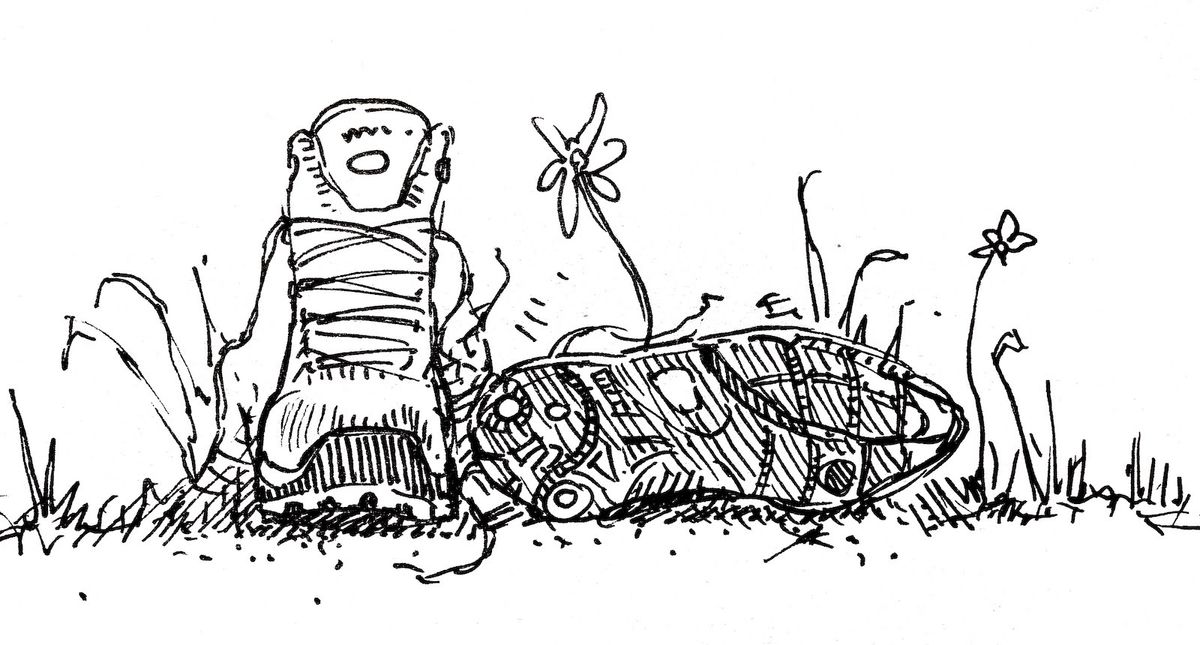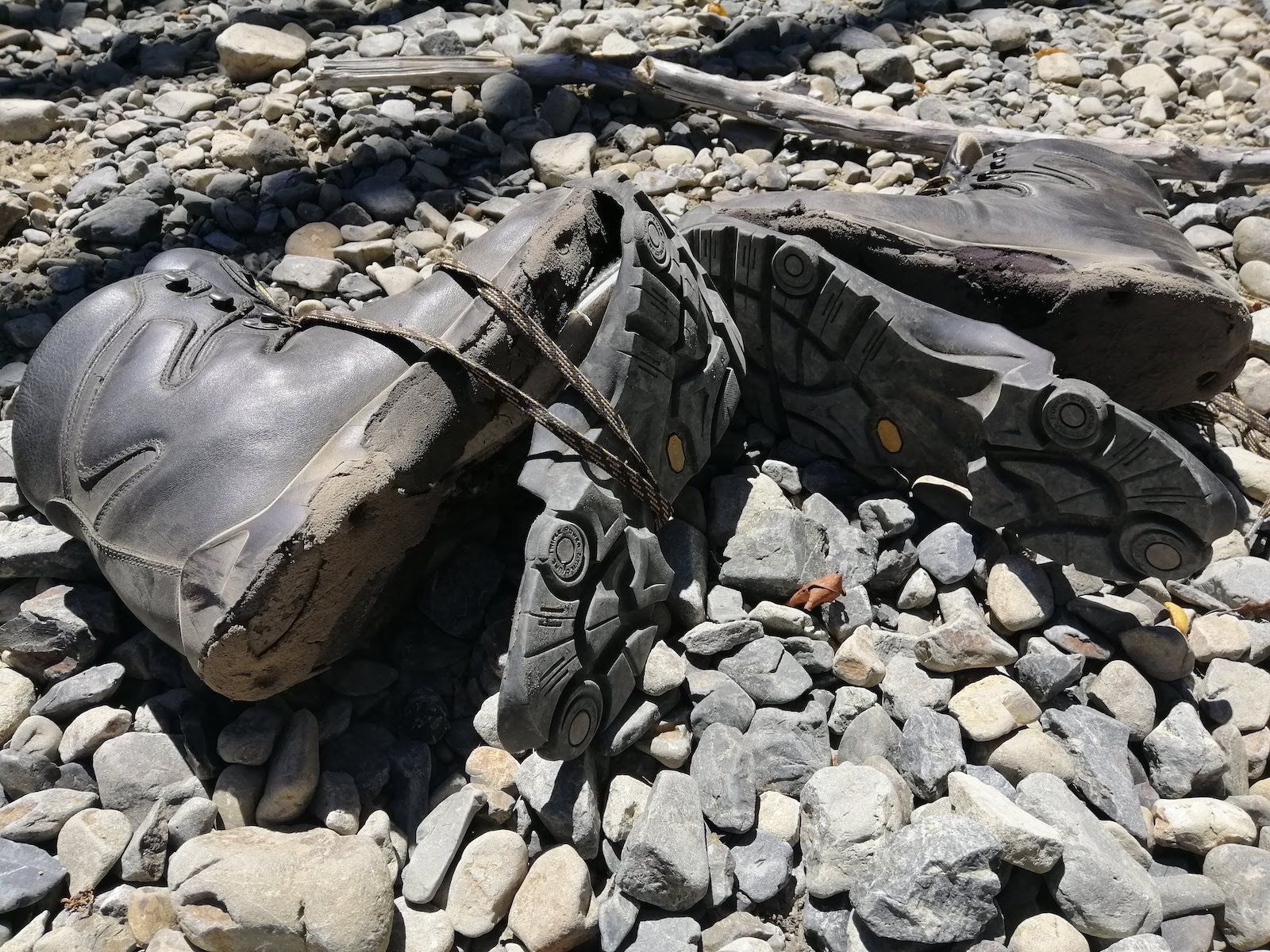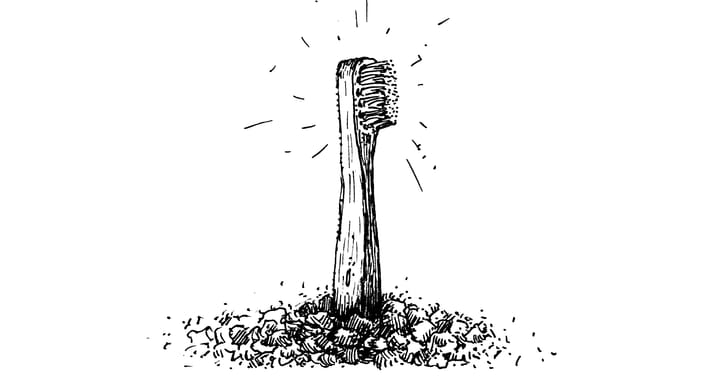Soul of Asolo
Pride, fancy boots set to self-destruct, tramping with kids, and a DOC ranger who prioritises mangoes

Dear Asolo customer support
Hi, Asolo customer support representative. 👋
In 2009 I purchased some Asolo boots at the small cost of every cent I owned. I believe the model is the “TPS 535 LTH V EVO”. Catchy name. I held them aloft in the store and a beam of sunlight alive with motes bedazzled their dark leather contours. I was swept along. The (high) places these robust boots would take me! The calibre of the boots surely guaranteed most of the work was already done. I’d practically fly up those mountains.
Now look, I do have to confess: Although I burst out of the gate with a fervour for the trail, there was a... dormant period. When I bought the boots I had just met Vic, and we were fresh of face and spirit, and we had the gift of time. When my son Neko was born, the tramps slowed down, and by “slowed down” I mean “didn’t happen at all”. (And by “the tramps” I mean “at most, several walks”.) Then Ida was born. Neko is now… nine; Ida, five. Just to give you an idea of the timeline.
At first the boots sat like a trophy, next to the other shoes. Then, we migrated them to the wardrobe. Then the garage. Then, the cellar, next to a gaping hole in the concrete wall that led to the dusty nether regions beneath our house. The boots stared into that abyss of ancient soil and rat poo and abandoned dreams, alone. They grew dusty. Spiders settled inside them, weaving webs across them. They got jostled between piles of wood, boxes and expended light bulbs.
Until recently. A group of friends organised a family tramp to Turere Lodge, in the hills near the Orongorongo River (New Zealand). Before then we hadn’t really even considered that small people could walk a trail. We underestimated their stamina and will. (You just need to account for the fact that they can’t carry as much gear. The adults will have to carry most of it. You just need to realise that.)
To prepare for the trip, I brought the Asolos, light grey from the dust, up from the cellar. I scooped out the spider webs, and the nests of spider eggs, and the spiders, and the spider corpses. I wiped off the dust with a damp cloth and cleaned the laces. I massaged the outer with some leather treatment, let it soak in, and buffed them to a sheen. I did a few circuits of the lounge in them, because, you know, you’ve got to test your equipment.
And that might have been the end of a fairly straightforward story: Man buys high-end boots. Leaves them for a while. Puts them on again. Attains great heights.
But that wasn’t the end of the story.
Ascent
In the Wairarapa carpark where we gathered to prepare for the tramp, the other adults commented on my boots, saying things like “Those look like great boots,” to which I would respond with something like “Yes, thanks, these are great boots.” I can’t remember the exact quotes because my mind was clouded by pride.
It took a while for the last few families to arrive. I went through this loop of shouldering my pack, realising we weren’t going anywhere for a while, then thunking it back onto the ground. I saw that one guy had a metal stovetop coffee maker strapped to the side of his pack – it wasn’t the kitchen sink, but it seemed close.
When we finally started up the stoney trail, hours after first gathering, it was in ragged groups of children, adults or both. The kids ricocheted from one section of the track to the next – they wore light backpacks, which allowed them to move like gazelles. I thought that we might have organised the kids into dedicated groups, accompanied by an adult, but no one else seemed to be thinking along that line, and I didn’t want to appear like the one parent who wasn’t free and easy and relaxed; and I thought that maybe I should embrace the fluidity of the outdoors and be more confident that probably no one would fall off a cliff. Probably.
After about five minutes, I entered a muffled piece of track enclosed by dense ferns. I hadn’t caught up with the kids ahead, and had powered ahead of the others behind. That was when I heard a strange noise that was not of the bush. A small scrape, with a squeak. I dismissed it. But it persisted. My foot started sliding a little beneath me. I started to hear a flap, like someone bringing their hand down carelessly on a yoga mat. I could see that the sole of my left boot was parting with the heel. The exposed midsole looked jagged and dry.
It’s okay, I thought. Minor setback. These are Asolos. They’ll hold, even partly damaged. But then the right boot started to come apart too. The timing of it was remarkable, like someone had planned that both boots would fail instantly at exactly the point in a tramp when a person must question whether they should turn back or keep going. Unsure what to do, I decided nothing – my default stance in life – and kept walking.
Each flap became a gape. A cool breeze infiltrated my boots, which felt nice for a wee while. I stopped. At this rate, in ten minutes the bottom of each shoe would fall off. But what to do? Vic and I had the gear for the whole family shared between our two packs. They were all up ahead, somewhere, negotiating cliffs, carefully, (hopefully). No cell reception. Should I double back, grab the car, and go buy some new boots? That would put me hours behind the others.
I kept walking. My toe fumbled against what I first thought was the outsole, as the midsole just crumbled away, but I realised it was the trail itself: grit and soil. A rogue stone entered the inner sanctum of my left shoe, and began to toy with the squishy contours of my heel, the naive flesh of my arch. I tried to deny all of this, and pretend it was fine, but there was no escaping that elements meant to remain outside had now infiltrated the inner.
Who needs boots?
Two guys from our group, Christian and Joe, caught up with me, and stopped to talk.
“What’s up, Rich?”
The boots mostly spoke for themselves.
“Maybe you could use the extra length of those laces and tie them all the way round the bottom, to hold the soles on,” said Joe, trying to help. But, I thought, surely the track would just grind away at the laces like sandpaper, and they wouldn’t last the hour. I was starting to feel light-headed.
Christian, who’d started on the trail last, stepped forward casually to appraise the situation. Only then did I notice he didn’t even have any boots. He was walking the track barefoot. I was in a quandary about my expensive boots holding together well enough, yet Christian’s feet forced a different question: What the fuck do you need boots for?
I sat down and looked off into the distance at nothing in particular.
Christian pointed to some jandals (flip flips! thongs!) hanging off the side of his pack.
“You could use these,” he said. “I probably won’t need them.”
He gave me a big grin, then he and Joe walked on.
I sat there, alone, with every adult and child now zipping up the mountain ahead of me. Well isn’t this a piece of work, I thought, this wrecked mass of aged adhesive, crumbly foam and lovingly restored leather.
Pull yourself up by the laces
I felt evaporated. There was now no way I could be hopeless because it was all gone, the kettle boiled dry. But electricity was still surging through the element, and now it was burning.
I stood up and strapped my soles to the uppers with the laces, going red in the face. So what if they fell off? Would I be any worse off? At this point, I’d crawl to the top if I had to.
I powered up that incline. I pounded the ground and the ground pounded my boots. The soles slithered; my ankles wobbled. But I was too angry for a sprained ankle.
The laces frayed. I bent down and tightened them again. Then again. Then again. The laces held. One thing I will say: Asolo makes excellent laces. These laces were sandpapered against the track for hours. One other thing I will say: Asolo makes excellent outsoles. Diamond hard. Impenetrable. Just a shame they didn’t stay attached to the boots.
I passed others. I gathered flocks of children, shooing them away from the edges of cliffs. No one questioned me, for all they needed to do was look at my boots and my face and they could tell I should be left to contend with the mountain. The worst possible, angry version of myself. Sorry, everyone else on the tramp that day.
My socks scraped against the ground, and the fabric ripped. The grit broke through to my skin. But my skin held. No blisters formed. Only knots of pure muscle pain from maneuvering boots which handled like a car with no wheels, on ice.
The top
I reached a bridge with a stream running beneath, and onward down the valley which now opened up to us. I followed a trail down to the stream, dumped my pack, took off my boots and let my red, splotchy feet vent. The others came down, stripped off, swam, basked in the sun. I just sat in the shade and cooled down.
Christian arrived much later. You have to walk a bit more carefully and deliberately with no boots.
When we got to the cabin, the children devolved into a mad swarm of forest pixies, claiming bunks, jumping in and out of windows, sprinting along cliff edges, opening and slamming doors.
The boots hadn’t delivered on the vibe – confident mountain strider enchanted with the bush, soul of the trail! – I was going for, nor had they delivered on the basic functions of staying whole, or remaining attached to my feet. The fact that both boots failed in such a spectacular fashion at exactly the same time got me theorising that they had been programmed with some kind of self-destruct mechanism.
Is the vibe up to the person, or the boots? Boots. Definitely the boots.
Christan, Joe, Vic and the other adults went outside to sit down with a wine and enjoy the early evening. I lay down on a mattress to gather my strength. For tomorrow, the descent.
Descent
The next day, the sun seeped through cracks in the trees. We set off early, as a family: me, Vic, Neko and Ida.
Despite the scrape of the cold ground against parts of my bare feet, I was upbeat that gravity would get me there today. Worst come to worst, I could coast into the carpark in a few hours, feet bloody, and just drive to the hospital.
Shortly into the walk, Ida needed an emergency toilet stop for a sore tummy. (This walk! It had everything.) Vic helped her make the best of it, wrapping it up in some toilet paper and leaves. We couldn’t just leave it all there on the trail, and we didn’t have any kind of digging tool, so Vic hurled the package off the trail, to be assimilated into the earth. It hit a tree and exploded. Sorry forest. Sorry Ida. Sorry Vic. Sorry… anyone else crossing the track that day.
We continued on to a swing bridge about halfway down the mountain, and laughed at the sign of people falling off the bridge. It was a sign to warn people about overloading the bridge, but the cartoon style made it more like a dark joke. It made me think of the New Zealand train-crossing road signs, which always make me think: “Toy train ahead!”

The boots were faring worse than the day before. The left one was holding, though it was now a pavlova of leather and crumbly foam. The right was purely decorative. My right lower leg would slip sideways as the sole went one way and my foot went the other. The contortions whipped up my knees, spine and brain stem, before whisking off into the atmosphere through the top of my head.
But I wasn’t alone. I had my people with me, we were in a forest, and there were things to laugh about.
The kids were tired. The flipside of us leaving early was that the kids were no longer swept along by the mad resonance of innumerable children running through the bush. This meant that if we were ever to get to the bottom, we had to infuse the situation with extreme positivity to offset the children’s grumbles. There was no room for my own grumbles. What you really need when you’re falling to pieces is to be around people who are falling to pieces more. What will hold you together is the holding together of others.
Doc ranger, duct tape, mangoes
About fifteen minutes from the end of two days of walking, we ran into a DOC ranger walking the other way.
“Sorry I wasn’t up there with you – it was my night off,” she said.
We showed the DOC ranger the boots, and she put down her pack, immediately concerned. She rustled about, then pulled out rope, a mango, and – “There!” she says, with satisfaction – silver duct tape.
“Never be caught without duct tape,” said this DOC ranger who carried only the essentials and nothing more.
“Why do you have a mango?”
“I like mangos,” she said.
I went round and round the boots with duct tape, sealing the top with the bottom in a parcel of silver. We all agreed it was an improvement. There was less movement, and the Asolos were somewhat… whole again. My feet could rest a touch, in their nest of sock sweat, track grit, and crumbled sole. Dare I say it: the boots worked better with duct tape.
My eyes welled up with the sweet irony of it, here, with the finish line in sight. And then, fifteen minutes later, we were in the carpark. I sat down in the front seat of the car and cut myself out of the boots with a knife – the duct tape really was a one-way affair.
Hydrolysis
There’s a phenomenon I would learn about later from the Asolo website, in a guide on how to care for your boots, in a section labelled: Boot Sole Separation (Hydrolysis). “Hydrolysis” is a chemical reaction where the polyurethane sole reacts slowly with moisture in the air over time. The guide continues: “The polyurethane gets harder, more porous and, at some point, starts to crumble. In extreme cases, it can disintegrate completely and the sole might fall off your boots.”
So how long do we have with our boots, doctor? Well: “...at the moment, we estimate that it starts around six to seven years after a midsole is manufactured.” I love how they’ve added “at the moment”, as though at some point their estimation may change, the chemistry will be different, and perhaps the boots won’t self-destruct until a little further down the track.
I guess 5-6 years is still a fairly long time, although those boots might have sat in the store for a year or two. And these are boots made to weather some of the harshest conditions possible – perhaps the limited lifespan is the tradeoff? Except that Asolo also sells you the dream that you will be the soul of the trail, and telling me that the boots might just fall apart “because of chemistry” doesn’t feel much like part of the dream.
Yes, there is conventional wisdom (test your equipment properly, etc) that could have saved me – but I’ve never paid much attention to conventional wisdom. I’m more a disciple of the hard way, a maker of all the mistakes in order to know to stay away from them. And yes, if you do not carpe the diem with your expensive boots then the day where those expensive boots would carry you along with their amazingness will pass you by. I should not have left the boots alone in a cellar, for nine years. But I don’t think this is all on me, Asolo. I would have fared better with Christian’s jandals.




Comments ()